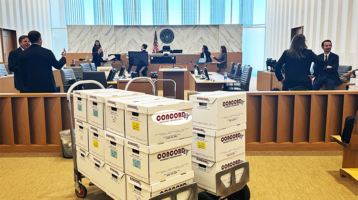From negotiating scope to relying on analytics technology, a University of Florida E-Discovery Conference panel shared some of the best practices to analyze voluminous productions.
February 09, 2023 at 04:13 PM
3 minute read

Cassandre Coyer
The volume of data that companies amass on their employees and customers alike is increasing at a staggering rate—and with it, so is the amount of discoverable data.
To help tackle this challenge, speakers at the “Making Sense of the Noise: Analyzing and Understanding Inbound Productions” Thursday session at the 10th annual UF Law E-Discovery Conference in Gainesville, Florida, shared some strategies on how to analyze voluminous productions, from relying on analytics to machine learning.
How to Negotiate Scope
Negotiating scope isn’t only a producing party’s tool. In fact, the panelists argued that receiving parties should be proactive in understanding what documents they expect to receive, whether it be inquiring about the custodians, types of data or production formats.
“It’s really important if you’re going to be a proactive, cost-effective receiving party,” noted Rebekah Bailey, a partner at Nichols Kaster.
In fact, she added that Rule 26(f) conferences are key opportunities for legal professionals to establish their expectations or share their “wish list.” They can also get insights into who the key players in a litigation and what the relevant time frames are to start planning production early on.
Such conversations around production formats, for example, have become especially important as e-discovery professionals to grapple with new data types, such as file links and modern attachments.
While there has been a lot of debate regarding ESI protocols’ value in e-discovery processes, Stephanie Clerkin, director of litigation support at Korein Tillery, argued that attorneys must establish a process to follow, especially when dealing with cases that can average 500,000 documents or more.
“The goal is to just streamline the process because it can be a lot at once,” Clerkin said, adding “templatize as much as possible, but also know it’s gonna change by case.”
How to Analyze Production
While most audience members noted that they prefer a focused production over what they called a “data dump,” even focused productions can remain voluminous. Scott Milner, a partner at Morgan, Lewis & Bockius, pointed to several analytics technology tools that can help e-discovery professionals efficiently surface evidence.
“Analytics aren’t just for outbound productions. If you have a document review platform you should get your money’s worth and use it for inbound productions,” Bailey noted.
For example, data gap analysis has become a popular review strategy, Milner explained, noting that “there’s tools out there that you can run across the data index that will point [gaps] out to you,” he said.
What’s more, the panelists said that tools that can assist with clustering of key words, threading, social networking or sentiment analysis can further help identify gaps in inbound production.
“It’s really important to focus on asking the right questions, understand what you’re going to get and understand what you’re not going to get,” Milner said.


